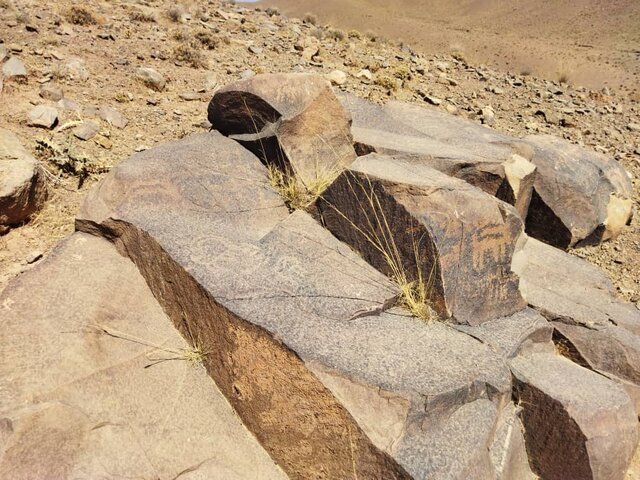Ancient petroglyphs discovered in central Iran

TEHRAN – A giant piece of rock bearing some 30 petroglyphs has recently been discovered in Mahallat county of Markazi province in central Iran.
“A collection of petroglyphs has been found in a mountainous areas situated northwest of Mahallat,” a local tourism official announced on Wednesday, ISNA reported.
“It bears about 30 figures and motifs the majority of which images of antelopes.” the official noted.
According to experts, these motifs belong to the Sassanid period (224-651 CE) and their carving and engraving tools included flint, iron, and thick hunting bones, the official explained.
Back in April, some 70 rock-carved petroglyphs, which experts believed to date back to the Sassanid era, were discovered in Mahallat. They depicted various motifs including mountain goat and hunter, horseman holding a spear.
In many ways, Iran under the Sassanian rule witnessed tremendous achievements of Persian civilization. Experts say that the art and architecture of the nation experienced a general renaissance during Sassanid rule. In that era, crafts such as metalwork and gem-engraving grew highly sophisticated, as scholarship was encouraged by the state; many works from both the East and West were translated into Pahlavi, the official language of the Sassanians.
Of all the material remains of the era, only coins constitute a continuous chronological sequence throughout the whole period of the dynasty. Such Sassanian coins have the name of the king for whom they were struck inscribed in Pahlavi, which permits scholars to date them quite closely.
The legendary wealth of the Sassanian court is fully confirmed by the existence of more than one hundred examples of bowls or plates of precious metal known at present. One of the finest examples is the silver plate with partial gilding in the Metropolitan Museum of Art in New York. The dynasty was destroyed by Arab invaders during a span from 637 to 651.
AFM
